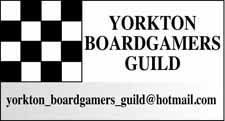Tash-Kalar is a game with a pretty solid fantasy theme attached to it.
"Tash-Kalar is the ancient art of magical combat performed in arenas and combat pits throughout the known world. Tash-Kalar is also the name of the oldest and most famous arena, the place where the game began," details the game rule-sheet.
Tash-Kalar: Arena of Legends offers two versions of play. In the standard one you score points for fulfilling certain requirements as detailed on game cards. In simplest terms that means matching your pieces to a design out-lined on the card.
In that element of game play Tash-Kalar reminds me a lot of Tim W. K. Brown's game Gridstones, a game I reviewed way back in 2009. Gridstones was a pattern matching game as well, where players moved pieces on a gridded board, each trying to match the design of their hidden cards.
While Gridstones grew a bit tiresome with repeated play, Tash-Kalar avoids that problem by adding some depth to game play. Matched patterns are not an end onto themselves, but are instead part of game play toward solving tasks, again determined by game cards.
Since cards play a significant role in the game, game play offers some definite re-playability, since patterns and tasks will vary from game to game. That said, each will have the same general feel since the goal of game play remains the same.
Cards of course add some randomness to things, it is their nature. Still with Tash-Kalar there is a lot of strategy which a player has to master to be successful. Piece placement, and when to do certain special things available in the game, are the secret to winning, not simply relying on luck.
Again from the rule set, "Tash-Kalar is an exciting board game that confronts players with the same intellectual challenges that duelling mages have faced for centuries. You can play the game with two, three or four players, in teams or individually. Whether you are playing the High Form or a death-match, all games of Tash-Kalar have the same basic rules; Players take turns creating magical stones and placing them in patterns that allow them to summon fantastical beings. Your beings can move around the arena, disrupt opponent's patterns, and form new patterns that allow you to summon more beings."
To help players settle into the game the rule set offers a basic, entry level form of the game, with a more advanced rule set introducing some added elements. Although a two-tiered rule set is a good thing, veteran boardgamers are likely to jump right into the deeper version, and I doubt they'll find it difficult to grasp what is going on.
I like the mechanics of Tash-Kalar, and can certainly see the potential for game expansions to add to the experience, which are both good things.
If the game lacks, it is in the components. The board and game pieces are serviceable cardboard, but in this era we generally look for something which is beyond serviceable. Wooden pieces with a nice logo would add a lot to the game aesthetically, and a wooden 'arena' (board), would take it up another notch as well.
It might just be the mature gamer coming out, but I have grown to more, and more appreciate the aesthetics of a game, maybe because I foresee the day I hand my games to the next generation.
Check out the game at www.tash-kalar.com
If anyone is interested in any of these games feel free to contact [email protected]



